

S&D Reflector Article Click here to read a larger version of this article. 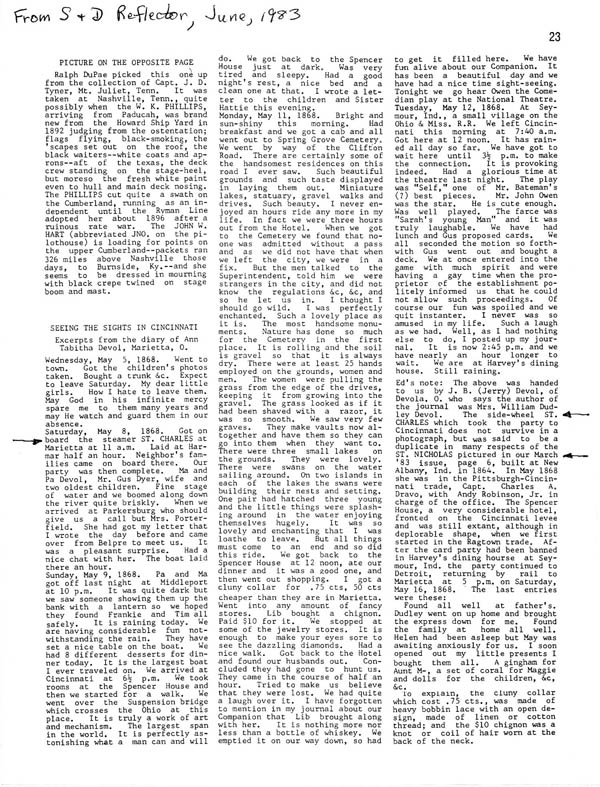 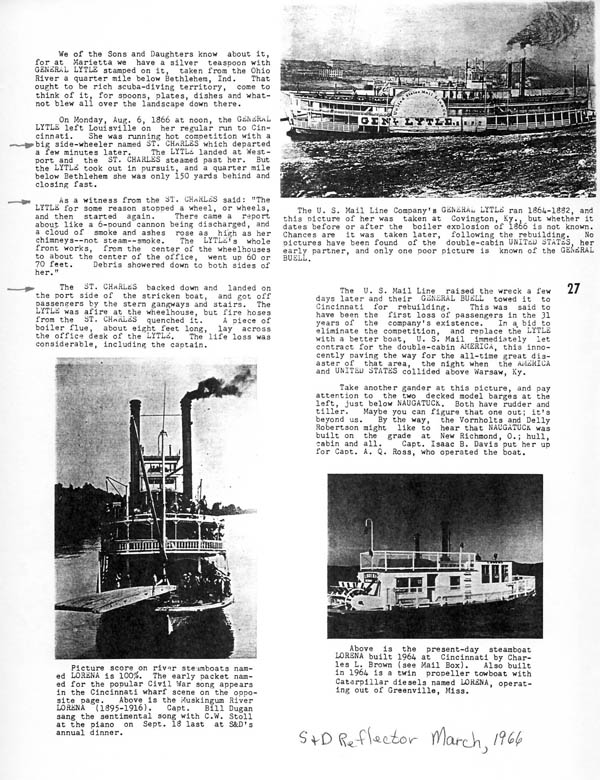 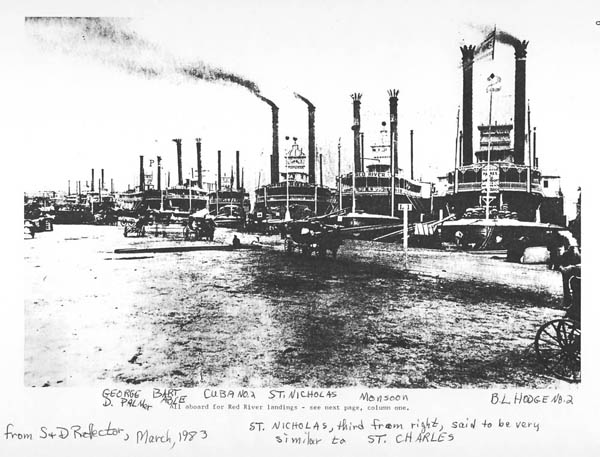 Area Photos, Boats, Misc. These photos show aspects of Capt. Watts' life.  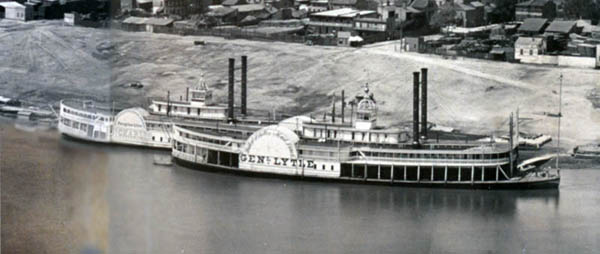  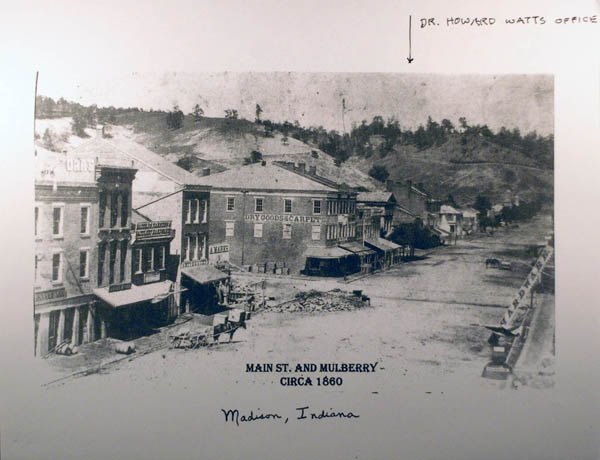 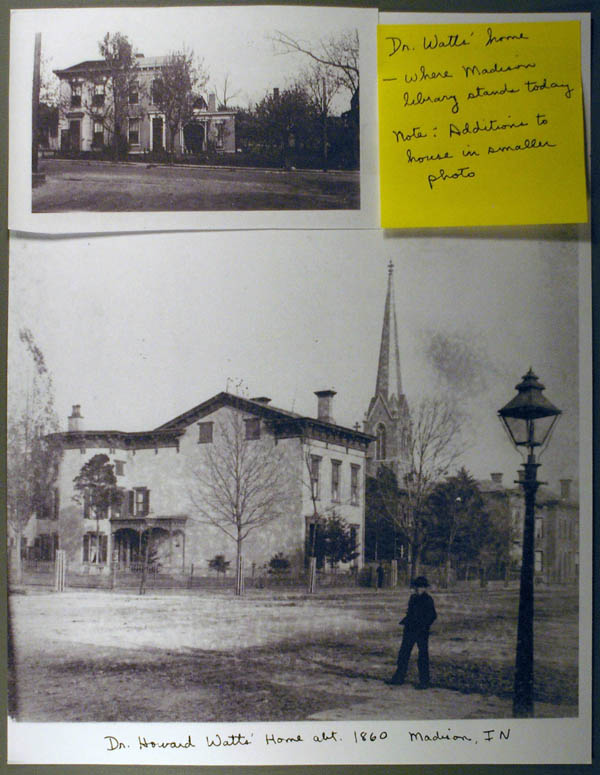 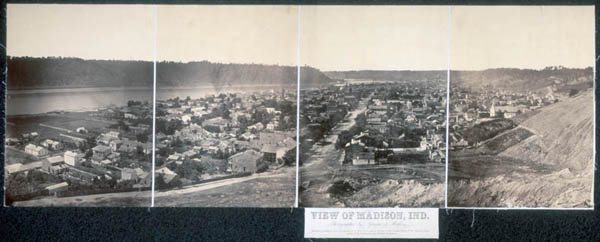 People's Line Menu Click here to read a larger version of this menu. 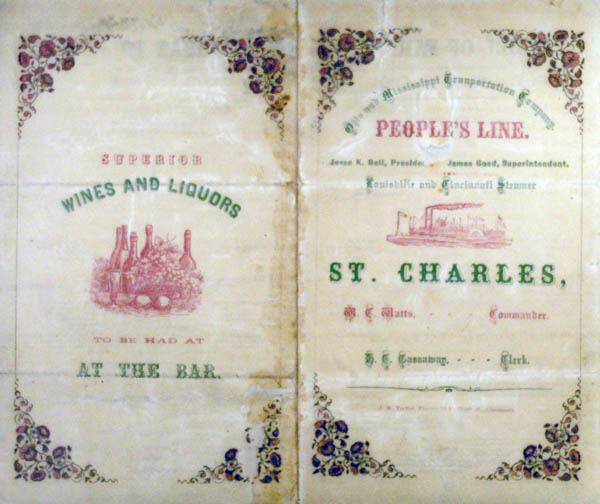 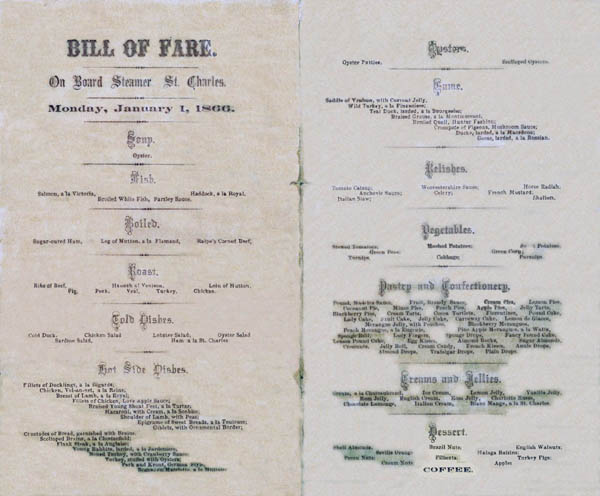 Portraits and Photos  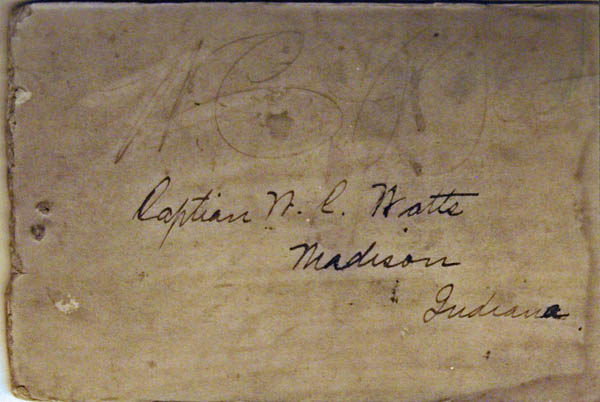 This is Capt. Watts' signature, from the back of his photo, above. Following are photos of the Captain's three daughters.  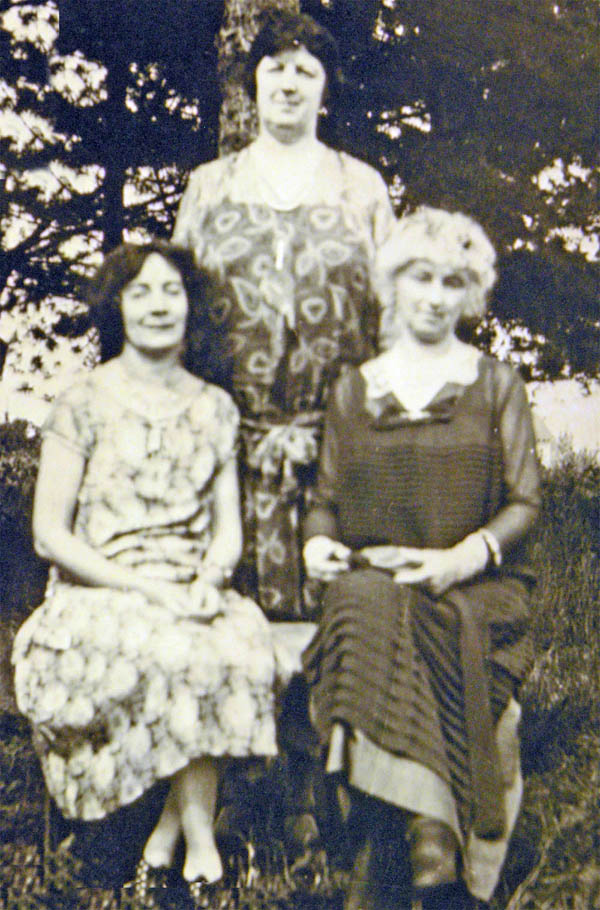 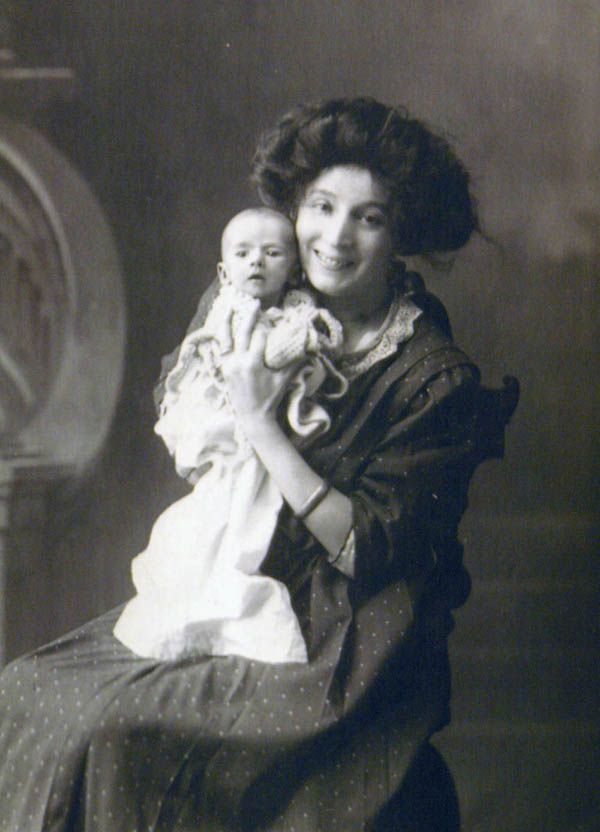  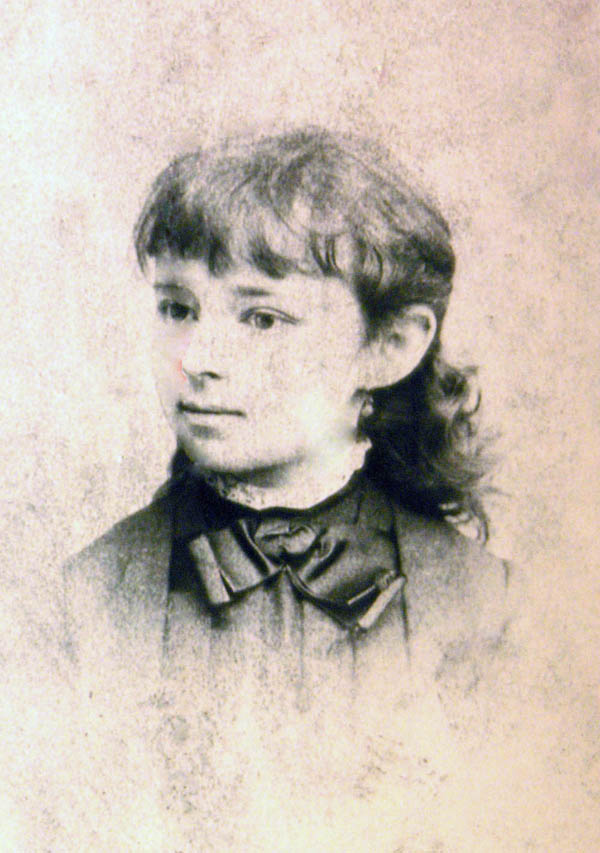 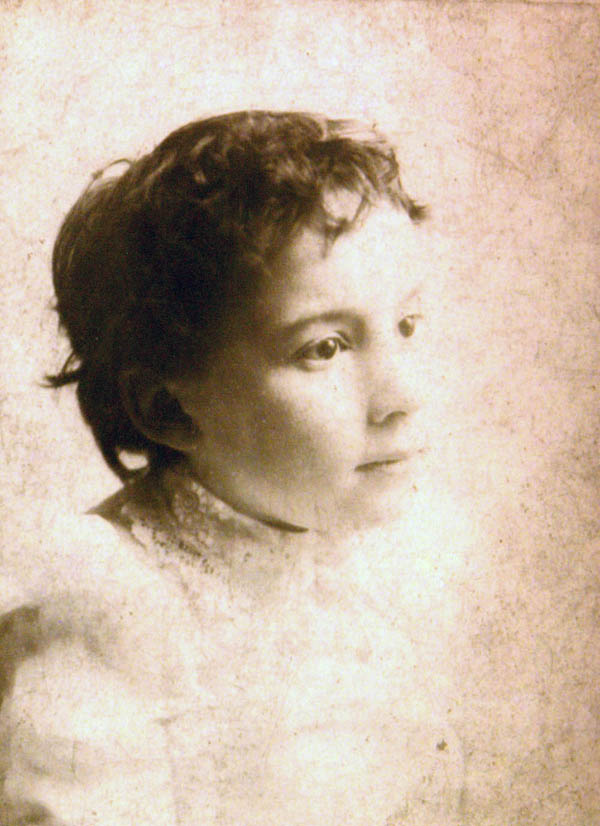 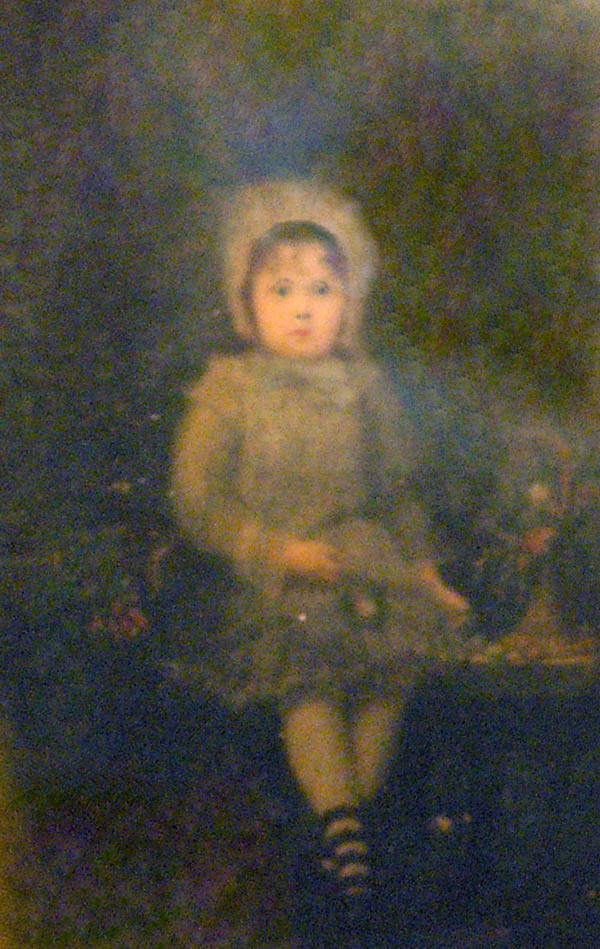 Graveyards, Monuments, Markers These graveyard photos show the final resting places of members of Capt. Watts and family members. 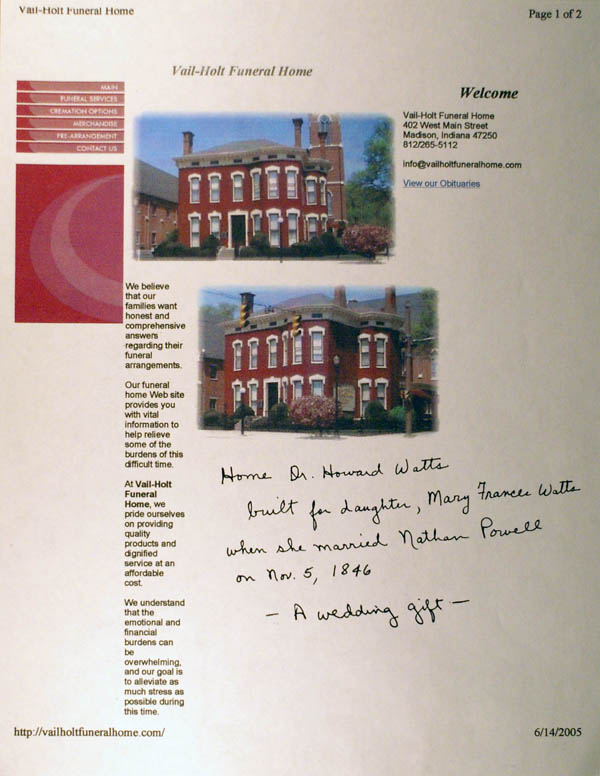   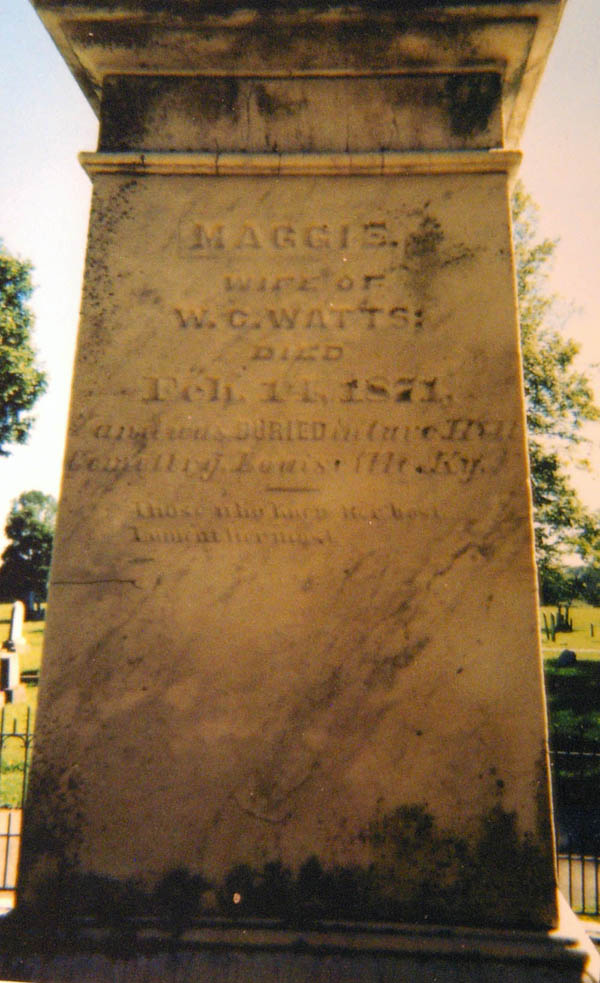 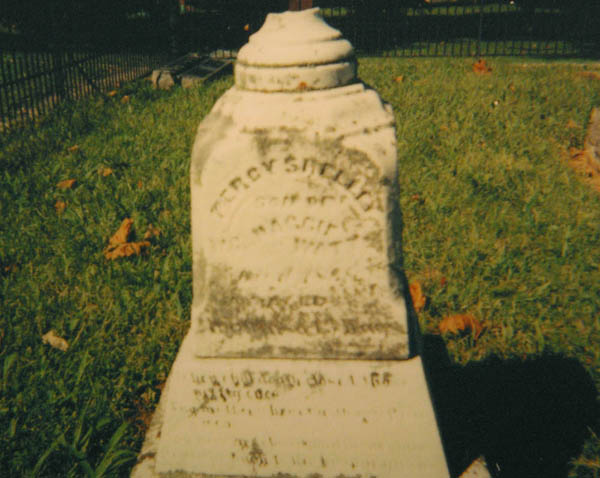 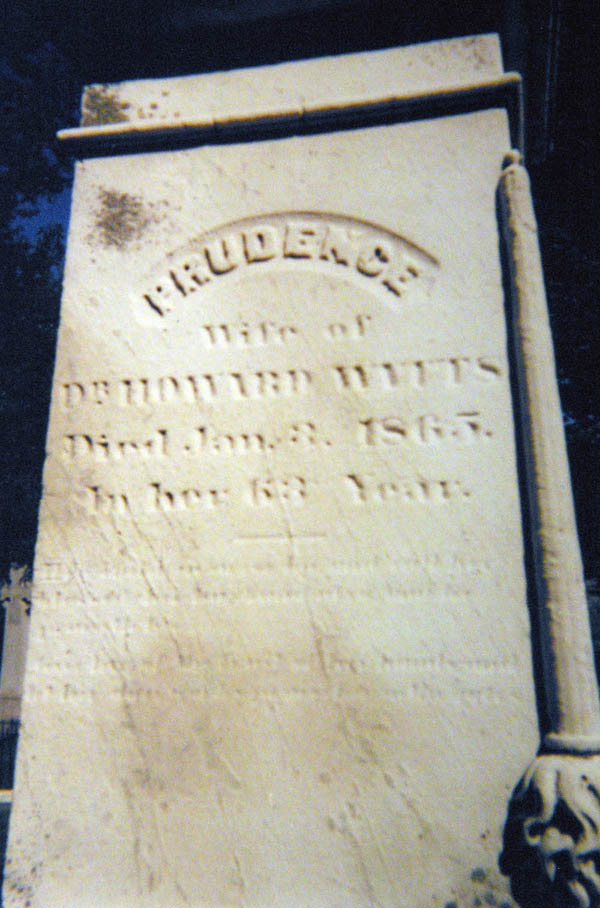 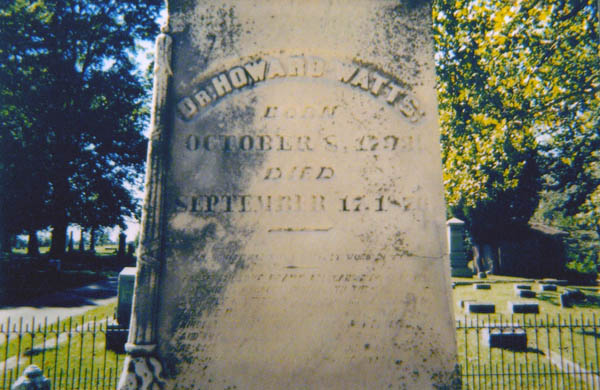 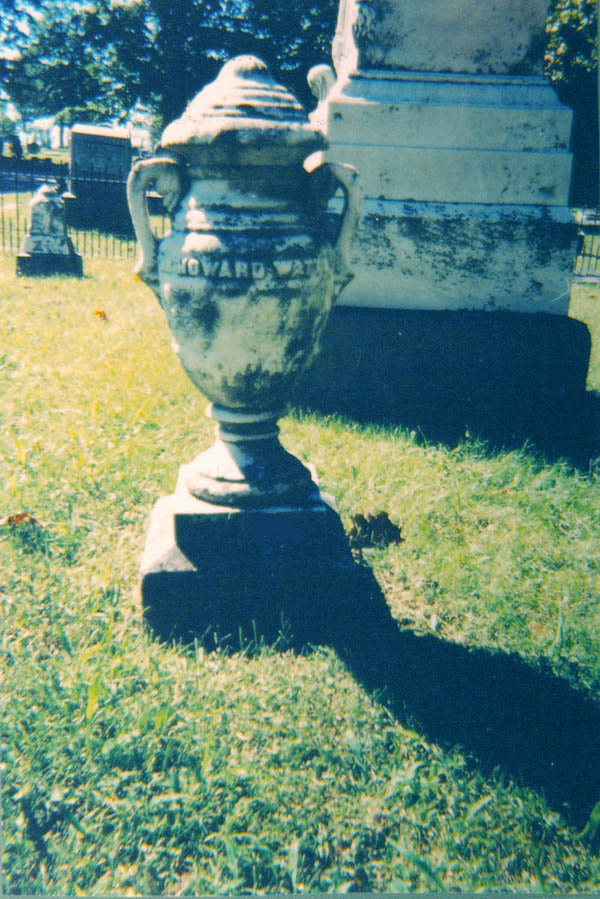 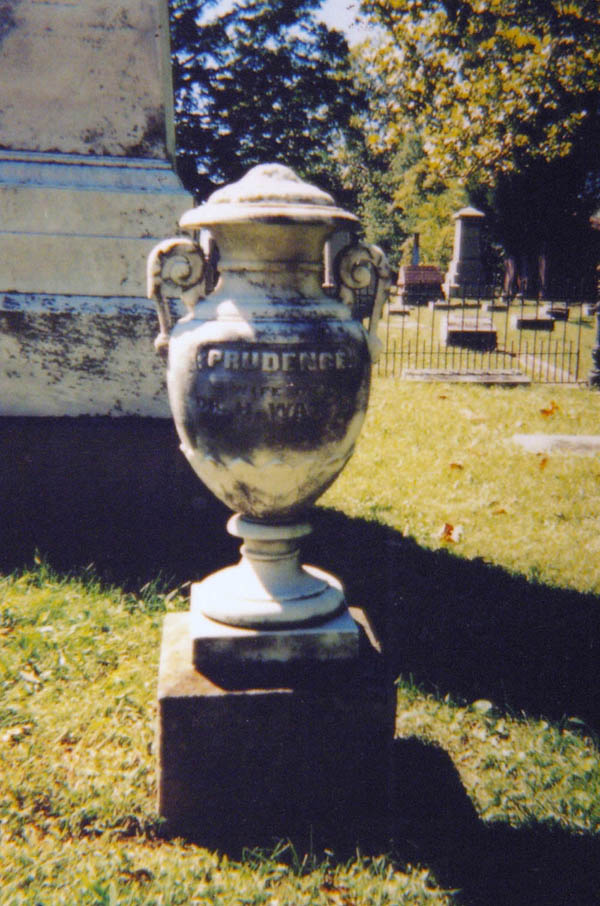
Editor's note: B. Milton Cuppy, Jr., is a direct descendent of the Steamboat Captain W.C. Watts, William Colin(s) Watts, Commander of the People's Line in the 1860s. In a letter to Steamboats.com, April 23, 2009, Mr. Cuppy wrote, "You may notice the menu says Capt. W.C. Watts. He is my great, great, grandfather." He added, "This was a common CD sent to every one, relatives as well." This was a group effort. Milton Cuppy provided the menu, boat photos, and Fred Way Directory excerpts. Sondra Weaser provided the Captain's and daughters' photos. Photos of buildings came from the Madison Historical Society. Steamboats.com thanks Sondra Weaser and Mr. Cuppy for sharing his family ancestry with our visitors. Steamboat Ancestry The following Information was taken from several sources, but primarily from "Way's Packet Directory, 1848-1994." (reference #'s in parentheses) (other references, as noted) There are at least six St. Charles named Steamboats. The St. Charles that Capt. W.C. Watts (William Colin(s) Watts) was the master on is as follows. This knowledge comes from the St. Charles listed in an original copy of a "Bill of Fare" (menu) dated Monday, January 1, 1866. She was owned by the People's Line of the Ohio and Mississippi Transportation Company, Louisville and Cincinnati Steamer. Jesse K. Bell, President; James Good Superintendent; W.C. Watts, Commander; and H.C. Gassaway, Clerk. St. Charles #4916 Side Wheeler Packet, wood hull, built in New Albany, Indiana, in 1864. She was 764 tons, 285 Feet by 40 feet, and drew 6-1/2 feet. Engines were 24-1/2s-8, seven boilers. Capt. Jesse K. Bell formed the People's Line and ran this boat and "Wild Wagoner" in the Louisville-Cincinnati trade in opposition to the U. S. Mail Line. From the Photo from the Library of Congress of the St. Charles and the General Lytle, from the stern to the front poles (all but the poles hidden on the St. Charles by the General Lytle). It appears the St. Charles is about 5/6 the length of the General Lytle. Therefore, the General Lytle is approximately 342 Feet long. Collided with Major Anderson December 12. 1865 at Coopers Bar, piloted by Napoleon B. Jenkins. On August 6, 1866, was racing with General Lytle at Bethlehem, Indiana, when the latter exploded. The St. Charles picked up survivors (from inter-net on St. C research). The People's Line quit, and St. Charles (and "Wild Wagoner" #5789) was sold at public auction at Cincinnati November 1866 to the only bidder Thomas Gaylord for $50,000. In mid February 1867, Capt. Hugh Campbell became master and she ran Louisville-New Orleans. Entered Pittsburgh-Cincinnati trade, 1868 Capt. Charles A. Dravo, with Andy Robinson, Jr., in the office, and ran until latter June when low Water stopped her. Resumed in latter September, with same master with George L. Rappart, Henry Chapin, and J. M. Lovett in the office, piloted by Ben Hall and Joe Witten, and with Joe Dodson, steward. Immediately after the "United States America" collision she was chartered by the U. S. Mail Line Co., for the Louisville-Cincinnati trade and so continued until December 1869. During this term of charter she attempted a race with the "Robert E. Lee," upbound at Madison, April 4, 1869, and was quickly vanquished. Resumed Pittsburgh-Cincinnati December 1869 trade, Capt. Charles A. Dravo, with George L. Rappart, first clerk, and with James Raowley and C. C. Cable, pilots. Sank at Duffs Bar after striking a rock, near Dixmont, Pa., in Neville Island, February 11, 1871, downbound, pilot Ben Hall on watch. She was raised within a week and went to the marine ways at Cincinnati. Resumed and ran until latter April when upbound she broke hull timbers in Sisters Island, the river low, and she couldn't get through Glass House Ripple at Brunots Island, and the D. T. Line brought flats and took her fright to Pittsburgh. Resumed in the fall and got frozen in at Safe Harbor, Pa., in late December. Burned at Cincinnati March 7, 1872, along with the "Major Anderson" and others. There is evidence she was shorter than the dimensions given in this account when originally built, and was lengthened at Madison Indiana by the People's Line, in 1866. Additional information with "Major Anderson." (#3716) Capt. W.C. Watts "Universe," Side Wheeler Packet, wood hull, built Cincinnati, OH, 1857, 399 tons. 180 x 35 x 7 feet. Engines 22's-7, three boilers. Ran Cincinnati-New Orleans, Capt Watts . . . Snagged and lost October 30, 1864. (#5524) There are two other Capt. Watt's listed in the index. (The question - is this W.C.?) "Lady Grace," Stern Wheel Packet, built Madison IN, 1865, 159.8 x 33 x 5.2 feet. Engines15.5s-4.5. Three boilers . . . In spring of 1868, was in the Cincinnati-Evansville trade, Capt. W.C. Watts (#3335) People's Line (Internet Steamboat research & Way's Directory #'s) Area: Alabama River Officers: 1865, when formed, headed by Capt. Jesse K. Bell. 1892, October, Mgr. T. H. Moore. Boats: 1865-1866, November, "Wild Wagoner." (#5789) 1866, (#1014) "Chieftain," lost January 13, 1877. 1866, (#1866) "Elector" 1878, purchased "John S. Bransford," 1872, (#3108). 1894, "Tinsie Moore," possibly "Hattie Moore." 1962, "St. John." Comments: Formed to compete with U. S. Mail Line between Cincinnati-Louisville. Jesse K. Bell "Mary Bell," Named for the wife of Jessie K. Bell. (#3789) "Clarksville," built 1869, Madison, IN, owned by Capt. Jessie K. Bell. (#1173) "Fannie Moore," 1876, Madison, IN, owned by Capt. Jessie K. Bell and Capt. John Woodburn. (#1990) "Jesse K. Bell," 1856 (R#3003) "Jesse K. Bell," 1879 (R#3004) "John Simpson," 1850, Capt. Jessie K. Bell. (#3115) "Pacific," 1878, Capt. Jessie K. Bell, with other Capt's. (#4373) "W.G. Campbell," 1847, Capt. Jessie K. Bell. (#5631) James Good "Mississippi," 1864, Capt. James Good, (#3974) H.C. Gassaway No data. General Lytle (#2257) Side Wheeler Packet, wood hull, built in Cincinnati, Ohio in 1864. She was 1053.25 tons, 285 Feet by 40 feet, and drew 7 feet. Engines were 26's-9. Seven boilers 37" by 24 ft. Two Flues. Built for the U. S. Mail Line Co. and ran Cincinnati-Louisville. She exploded boilers up bound about a quarter mile below Bethlehem, Indiana, Monday, August 6th, 1866. She had left Louisville at noon, and had landed at Westport where the St. Charles caught up and went by. The "Lytle" was over taking the St. Charles when the explosions occurred. Witnesses aboard the St. Charles still about 150 Yard in the lead, said the blast sounded like the discharge of a six pounder. A cloud of smoke and ashes arouse as high as her chimneys, and no steam was visible. The "Lytle's" whole front works, from the center of the wheelhouses to the center of the office, went up about 60 or 70 feet. The debris showered to both sides of her. The St. Charles immediately backed down and came along the port side. Passengers were vacated by the back stairs, as the "Lytle" was afire near the port wheelhouse. Flames were quenched by fire hoses from the St. Charles. A piece of boiler flue, about eight feet long, lay across the "Lytle's" of-fice desk. Capt. Goodman, master of the "Lytle," resident of Madison, Indiana, was on the roof, over the barbershop. He lived about ten minutes, unable to talk. William Miller, chief engineer, was taken to Louisville badly scalded. His son Charles, striker engineer, was not found. Henry Edwards, second engineer, died soon after the accident. The wrecked boat was towed to Cincinnati by the "General Buell," where a reporter wrote: "She is one of the most complete wrecks we have ever seen." The life loss was variously estimated as 30 to 35 lives. Silverware and fragments of dishes, etc., were picked up in the area for many years after. She was completely rebuilt and ran many years. The officers on the "Lytle" were outfitted in uniforms in November 1876, "made of blue cloth," and uniform caps had a silver plate bearing the designation of each officer. The idea was said to have been introduced by Capt. Richard M. Wade. Capt. Ben M. Merrielees was master in 1877. She was given an electric light plant, probably to run an arc light in 1875. On June 24, 1879, she hit an obstruction and sank 14 miles below Cincinnati. Raised, dismantled at Ludlow, Ky., in June 1882. Capt. George Anderson, Carrollton, Ky., used the hull as a wharf boat at that place, and parts of the cabin went to building the "Blue Wing" which he owned. 
|